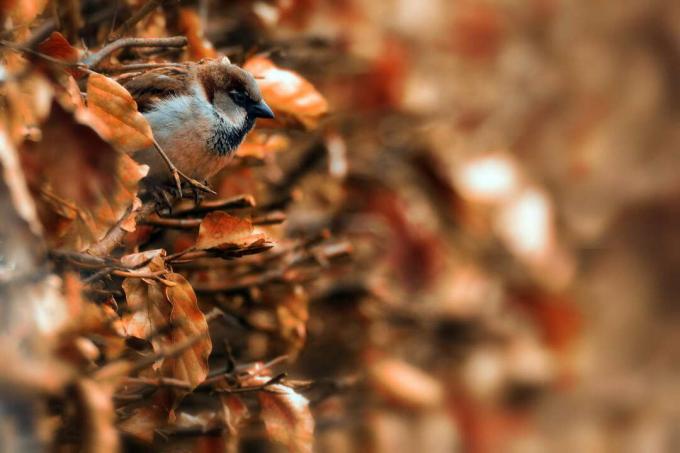European beech hedges need to be trimmed regularly so that they provide good privacy. Here you can find out everything you need to know about cutting beech hedges.

Especially young beeches (Fagus sylvatica) are fast-growing. Regular pruning is therefore extremely important for the growth of a beautiful, dense beech hedge. If the growth is not kept in check, there will not be enough light to reach the lower branches and your hedge will become bald from below. The cut ensures sufficient clearing and wonderfully branched shoots. We will show you when and how your European beech is cut.
contents
- How much does a beech hedge grow in a year?
- European beech hedge: when to cut?
- European beech hedge: how to cut correctly?
- Radically prune the European beech hedge
How much does a beech hedge grow in a year?
European beeches can grow 40 to 70 cm per year when they are young. The dimensions apply to both the height and the width. However, the plants have to be in the right place and well cared for. You can find out how to get the maximum vigor out of your European beech hedge in our overview article on
European beech.European beech hedge: when to cut?
Secateurs are used twice a year to keep the growth in the fence and to generate a nice bushy growth. The first cut takes place before the growth phase in February to March. The milder the winter, the more likely it is to cut back. The ideal time for the second cut is between June and August at the end of the growth phase. Remember to remove sick and injured shoots all year round. This prevents the spread of diseases and does not put unnecessary energy into the injured shoots. It is best to cut your European beech hedge on a mild, overcast and dry day.

European beech hedge: how to cut correctly?
In the first two years, long protruding shoots are shortened with sharp, clean secateurs and the tips of shorter shoots are removed. From year number three, the type of cut differs from the first to the second cut. The first cut is cut back more and the hedge is brought into shape. It is cut in such a way that the hedge tapers from the base to the tip and forms a flat roof. In this way, all areas get enough light and the risk of snow breakage is minimized in winter. Use guidelines to mark the height and shape you want. You will be more annoyed about a crooked hedge than about the time you spend in tensioning the cords. In addition, do not let your hedge grow too high, because if you have to climb high to cut, you can also fall deep. With the second cut, there is only one more cut. Be very careful when doing this, because beech hedges are very popular with domestic birds as a nesting place. Maintain sufficient distance from any nests that have been discovered or wait until the end of June to cut them. Then the little birds should have fledged. After each cut, water is used properly.

Note: If freshly planted beeches are shortened by a third in the first autumn after planting, this promotes beautiful, bushy growth.
Radically prune the European beech hedge
Older beech trees in particular are very easy to cut and can also be cut back radically if necessary in order to rejuvenate the hedge. This radical pruning takes place in February or March and is only necessary every few years. Very old branches are removed and the hedge is thinned out inside so that new shoots have room. Alternatively, the entire hedge can simply be cut back into the old wood. Only three eyes remain so that new shoots can form.
These products are ideal for cutting your shrubs, hedges and trees:- Felco secateurs: Manual pruning, pruning and pruning shears recommended for all types of cutting. In addition to plastic-coated handles, it has a precision adjustment system for the blade and anvil blade.
- Felco fruit tree and secateurs: Robust fruit tree and secateurs with wire cutter, sap groove and micrometer adjustment.
- Gardena telescopic arm scissors: Practical secateurs for effortless cutting of tall trees and dense shrubs from the ground.

Felco secateurs No. 11, red, 210 mm, 250g
43,46€
Details →

Felco fruit growing and secateurs No. 6
31,99€
Details →

GARDENA Telescope StarCut 410 plus
84,45€
Details →
Pruning is not the only maintenance measure that makes sense for red beech hedges. A few fertilizers are important to provide the hedge with all the essential nutrients. Here you will find everything you need to know about Fertilizing beech hedges.



